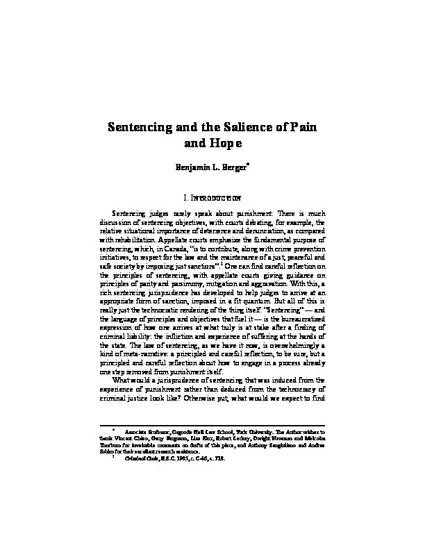
Article
Sentencing and the Salience of Pain and Hope
Supreme Court Law Review
(2015)
Abstract
Sentencing judges rarely speak about punishment. There is much
discussion of sentencing objectives, with courts debating, for example, the
relative situational importance of deterrence and denunciation, as compared
with rehabilitation. Appellate courts emphasize the fundamental purpose of
sentencing, which, in Canada, “is to contribute, along with crime prevention
initiatives, to respect for the law and the maintenance of a just, peaceful and
safe society by imposing just sanctions”.1 One can find careful reflection on
the principles of sentencing, with appellate courts giving guidance on
principles of parity and parsimony, mitigation and aggravation. With this, a
rich sentencing jurisprudence has developed to help judges to arrive at an
appropriate form of sanction, imposed in a fit quantum. But all of this is
really just the technocratic rendering of the thing itself. “Sentencing” — and
the language of principles and objectives that fuel it — is the bureaucratized
expression of how one arrives at what truly is at stake after a finding of
criminal liability: the infliction and experience of suffering at the hands of
the state. The law of sentencing, as we have it now, is overwhelmingly a
kind of meta-narrative: a principled and careful reflection, to be sure, but a
principled and careful reflection about how to engage in a process already
one step removed from punishment itself.
Disciplines
Publication Date
2015
Citation Information
Benjamin Berger, “Sentencing and the Salience of Pain and Hope” (2015) 70 Supreme Court Law Review (2d) 337-363.
